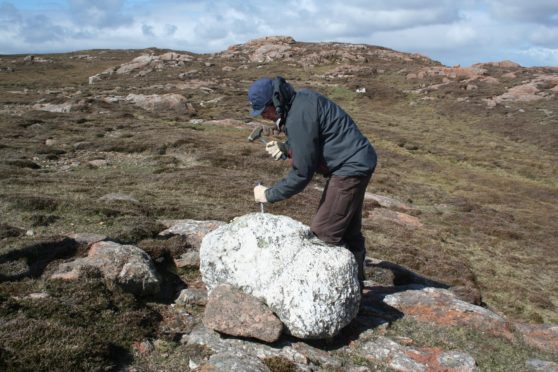The Shetland Islands and surrounding seafloor were covered by a massive ice sheet around 21,000 years ago, it has emerged.
The expanse rapidly collapsed about 2,000 years later, a study has found.
Research led by the University of Stirling settles a 150-year-old debate by providing “clear and unequivocal” evidence that Shetland hosted its own ice sheet, independent from the Scottish and Fennoscandian – comprising the Finland and Scandinavian Peninsulas – ice sheets.
The study discovered that the ice sheet covered more than 20,000 square miles and was in existence between 30,000 and 19,000 years ago – before reducing dramatically in size.
A smaller ice cap remained on Shetland for the next 3,000 years – but had melted completely by 15,000 years ago.
Dr Tom Bradwell, of the Faculty of Natural Sciences at Stirling, led the research and he believes it could provide important insights into ice sheet behaviour today – and help predict future rates of change and “large-scale singular events” in vulnerable terminating ice sheet sectors.
Dr Bradwell, a Lecturer in Biological and Environmental Sciences, said: “Our study has – for the first time – used onshore and offshore dating techniques, seabed mapping, and sediment analysis to reconstruct the complete deglaciation history of Shetland and the surrounding continental shelf.
“Our findings are clear and unequivocal: Shetland and the surrounding sea floor – once dry land – hosted an ice sheet between around 30,000 to 19,000 years ago. It was glaciologically independent from the Scottish and Fennoscandian ice sheets – but, at times, was connected to both.
“The marine portion of the ice sheet reduced in size dramatically between 19,000 and 18,000 years ago – leaving just a small, independent ice cap centred on mainland Shetland by 17,000 years ago. By 16,000 to 15,000 years ago, all of the remaining glaciers on Shetland had melted.”
Since the theory of widespread former glaciations was first proposed in 1840, natural historians and earth scientists have sought to understand the glacial history of Scotland and its outlying islands.
Because of its position, Shetland has always been a crucial part of the debate – with generations of geoscientists failing to agree on whether the islands hosted their own independent ice cap or if they were overrun by a much larger ice sheet.
The new research was conducted by a 17-strong team of leading researchers from several UK institutions.










